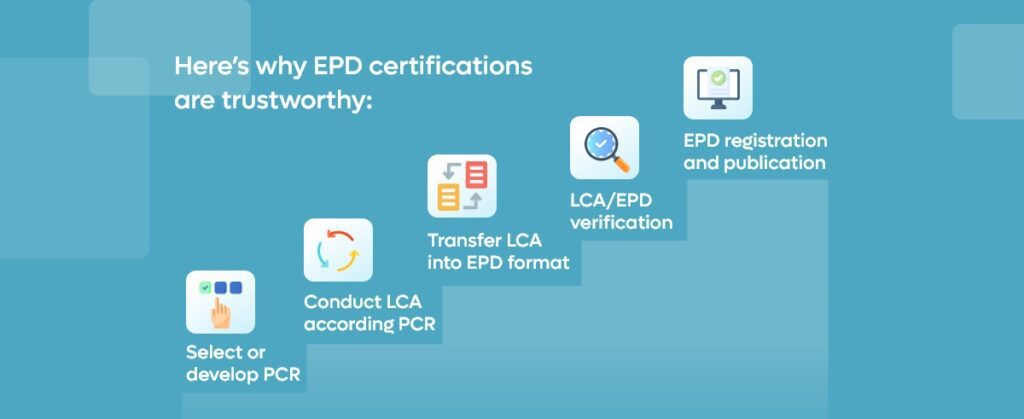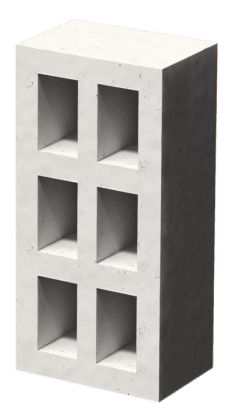Visakhapatnam-based company becomes India’s first construction materials startup to officially publish an EPD on The International EPD System.
Here at GreenJams, we’re all about finding ways to offer as much transparency as possible to our end consumers. Whether that is transparency with regard to how we operate, or with regard to how exactly our products are sustainable, we believe that transparency helps inform the public on how they could build better buildings.
So, it gives us immense pride to announce that we have officially published a third-party verified Environmental Product Declaration (EPD) for Agrocrete®. Now, we aren’t the only ones calling Agrocrete® carbon-negative!
Over the course of this article, we will detail why this is an important step in making the built environment a cleaner place for everyone.
What is an EPD and what is its significance?
EPD stands for Environmental Product Declaration. It is an international standard that “quantifies environmental information on the life cycle of a product to enable comparisons between products fulfilling the same function.” In plain English, it is a simple and succinct way for businesses and consumers to ascertain whether a product or service that they are considering is truly sustainable.
The reason why an EPD certification is important is because ascertaining whether a product is sustainable hasn’t exactly been straightforward. After all, this information is typically self-volunteered, so the lack of an independent third-party review of the information makes claims harder to trust.
Further, analysts suggest, based on the fact that carbon offsets have quickly become the de facto way for organizations to approach carbon neutrality, that the carbon offset industry could swell to over $35 Billion by 2030. However, the ground reality isn’t that rosy. The recent episode on John Oliver’s Last Week Tonight outlines multiple reasons why carbon offsets are not exactly the best way to cut down emissions, and oftentimes are borderline-fraudulent.
In other words, while it’s certainly a good thing that there are avenues for organizations to invest in operating more sustainably, there is a need to ensure that the foundation of the sustainability industry is set on solid ground. Moreover, it is becoming evident that real climate impact is going to result from actually optimising an organization’s operations to be less carbon-intensive, rather than operating as usual and purchasing carbon offsets.
In this paradigm, EPD certifications are a powerful way of signaling true adherence to climate goals to the global market. They are an invaluable tool that empowers customers to make informed purchasing decisions
Here’s why EPD certifications are trustworthy
Acquiring an EPD certification is an exhaustive 5-step process that includes a copious amount of verification by a global technical committee. The 5 steps are as follows:

Selecting or developing a set of Product Category Rules
The PCR is a copyrighted document that contains details of the methods employed to create a high-quality Environmental Product Declaration for the product category that a company belongs to. It also provides instructions for how the life-cycle assessment (LCA) should be conducted.
Conducting a Life-Cycle Assessment
Performing an LCA is one of the main steps in getting an EPD. The LCA study may be performed in-house or with the help of a consultant with expertise in LCA and environmental declarations. This forms the bedrock of a company’s case for getting an EPD
Transferring LCA into the EPD format
The results of the LCA study is then compiled into a standardized EPD reporting format that is in line with the requirements and guidelines in ISO 14020 (Environmental labels and declarations – General principles).
LCA / EPD Verification
The verification process is then performed by an approved individual verifier or an accredited certification body with knowledge and experience of the types of products, the industry, and relevant standards of the product covered by the EPD and its geographical scope.
Registration and Publication
After verification of the EPD, the organisation registers its EPD in the EPD Portal, along with other mandatory documentation. This EPD is typically valid for a period of five years.
Clearly, the process of getting an approved EPD certificate isn’t just exhaustive, it leaves very little room for manipulation. That’s why, at GreenJams, we believe that this certificaiton is among the most transparent and trustworthy.
The prevalence of EPD Certifications in the Indian ecosystem
The EPD system is open to both public and private companies internationally, in all product categories. Today, there are over 400 organizations from across 50 countries that publish information with regard to their companies’ operations on the platform.
Specifically in India, however, only large enterprises and MNCs have been publishing their operational information, perhaps as an ESG obligation. That is precisely why we are immensely proud to announce that GreenJams is the very first startup to achieve EPD certification.
As industry penetrates further into the Indian population, we believe there is a strong need for businesses to pivot from thinking of sustainability as an obligation, to considering it to be core to the business. In this paradigm, we are happy to be providing a real and effective way for companies to operate more sustainably through our range of carbon-negative solutions. So, if you’re a business or an individual looking to construct a new space, consider ordering a sample of our revolutionary material, Agrocrete® today!



